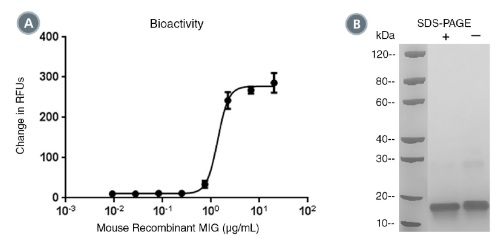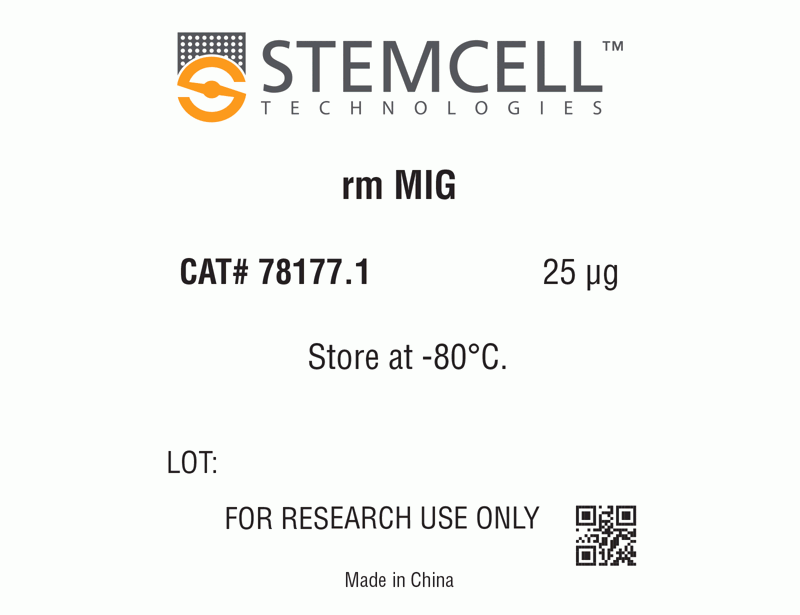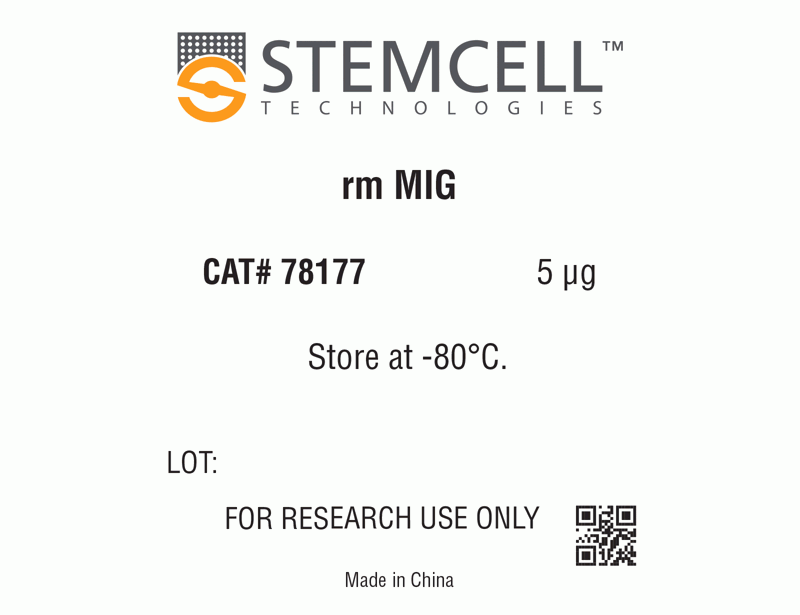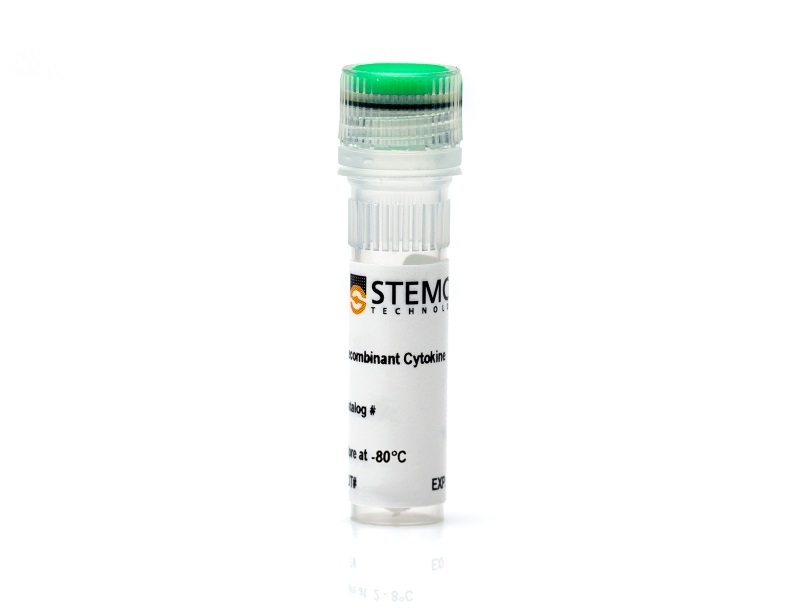Mouse Recombinant MIG (CXCL9)
Monokine induced by interferon-gamma
概要
Monokine induced by interferon-gamma (MIG), or CXCL9, is a member of the CXC chemokine family. MIG is closely related to two other chemokines: CXCL10 and CXCL11, all of which signal through the CXCR3 receptor (Ding et al.). MIG is secreted by a variety of immune cells including T cells, NK cells, dendritic cells, macrophages, and eosinophils, as well as non-immune cells including hepatic stellate cells, preadipocytes, thyrocytes, endothelial cells, tumor cells, fibroblasts, and glial cells of the central nervous system. MIG has also been shown to act as a chemoattractant for activated T cells and for tumor-infiltrating leukocytes (TILs), but not for neutrophils or for monocytes. MIG has also been reported to be both a tumor suppressor and tumor promoter in various types of cancer.
Subtype
Cytokines
Alternative Names
Chemokine (C-C-C motif) ligand 9, CMK, crg-10, CXCL9, Gamma interferon-induced monokine, Humig, M119, MIG, Monokine induced by gamma-interferon, SCYB9, Small inducible cytokine B9
Cell Type
Monocytes, T Cells
Species
Mouse
Area of Interest
Immunology
Molecular Weight
12.3 kDa
Purity
≥ 95%
技术资料
| Document Type | 产品名称 | Catalog # | Lot # | 语言 |
|---|---|---|---|---|
| Product Information Sheet | Mouse Recombinant MIG (CXCL9) | 78177, 78177.1 | All | English |
| Safety Data Sheet | Mouse Recombinant MIG (CXCL9) | 78177, 78177.1 | All | English |
数据及文献
Data

(A) The biological activity of Mouse Recombinant MIG (CXCL9) was tested using a Ca2+ mobilization assay in CHO-K1 cells stably expressing Gα15 and CXCR3. Calcium mobilization was measured using a fluorometric assay method. The EC50 is defined as the effective concentration of the growth factor at which calcium mobilization is at 50% of maximum. The EC50 in the example above is less than 2 μg/mL. (B) 2 μg of Mouse Recombinant MIG (CXCL9) was resolved with SDS-PAGE under reducing (+) and non-reducing (-) conditions and visualized by Coomassie Blue staining. Mouse Recombinant MIG (CXCL9) has a predicted molecular mass of 12.3 kDa.



